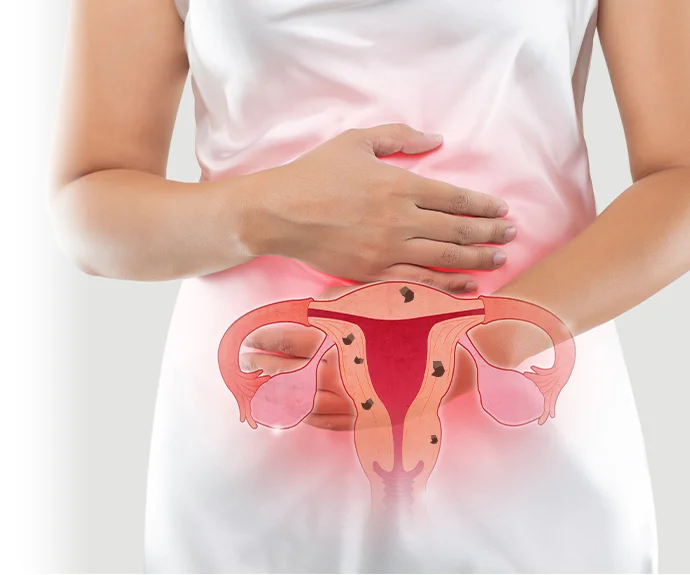Adenomyosis, a common yet often overlooked condition, causes the uterus to enlarge as the uterine lining infiltrates the muscle wall. During menstruation, this infiltrated tissue swells and bleeds within the uterine wall, resulting in severe period pain, cramps, and heavy periods.
Many other factors can lead to heavy and painful periods, such as fibroids and endometriosis, which are more widely recognised. Interestingly, fibroids and endometriosis often coexist with adenomyosis. Adenomyosis is also called as ‘internal’ endometriosis since the uterine lining grows inside the uterine wall in contrast to endometriosis, where it grows outside the uterus.
What Are the Symptoms of Adenomyosis?
The adenomyosis symptoms can vary. Here, we outline the symptoms of adenomyosis, which can cause severe period pain and cramps and may include:
● Typically, heavy and painful periods
● The sensation of a lump in the lower abdomen, as the uterus may become significantly enlarged
● The enlarged uterus exerts pressure on the bladder and bowel, causing increased urinary frequency and constipation.
How Is Adenomyosis Diagnosed?
Adenomyosis is often diagnosed through an ultrasound or MRI scan, revealing an enlarged uterus with one uterine wall thicker than the other. This condition is challenging to diagnose since the symptoms are common and affect many women. A significant number of women experience heavy and painful periods and consider these symptoms as ‘normal for me.’ If you find that your periods involve passing numerous clots, frequent protection changes, or if they lead to anaemia, you may consider them heavy.
What Are the Available Adenomyosis Treatments in London?
Managing adenomyosis can be challenging. Supportive treatments are usually the initial approach, including medications to alleviate period pain, such as painkillers and antispasmodic drugs like Mefenamic Acid, and to reduce bleeding, such as Tranexamic Acid. Sometimes, taking the mini pill or contraceptive pill can stop periods and alleviate symptoms continuously. The Mirena intrauterine device is also effective in reducing symptoms. Adenomyosis often improves during and after pregnancy and after menopause.
Uterine artery embolisation (UAE), typically used for fibroids, is also highly effective for treating adenomyosis. This procedure blocks the uterine blood supply through an interventional procedure carried out via the groin blood vessels. Hysterectomy is typically considered for severe cases where symptoms do not respond to other treatments and the family is complete.
Final Thoughts
Many women live with adenomyosis without ever receiving a diagnosis. The condition’s debilitating symptoms can disrupt daily life, affecting work and overall quality of life. It may lead to anaemia due to heavy bleeding, resulting in extreme fatigue and impacting performance at work and in sports. If you suspect you may have adenomyosis, consider Booking an appointment with the Top gynaecologist in London.


 Home
Home









